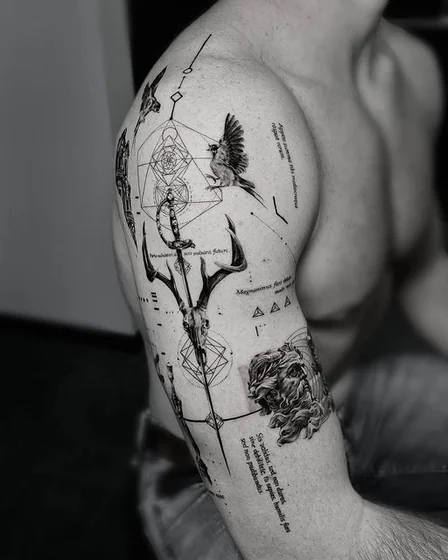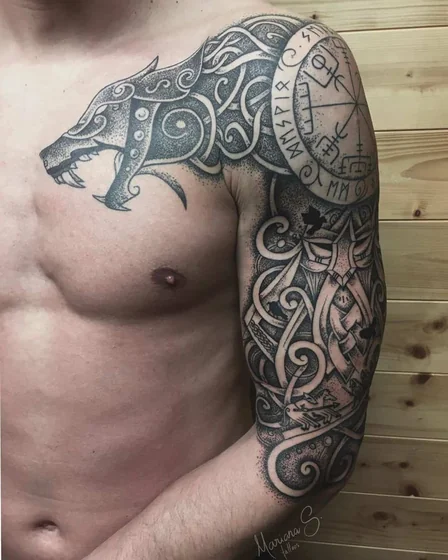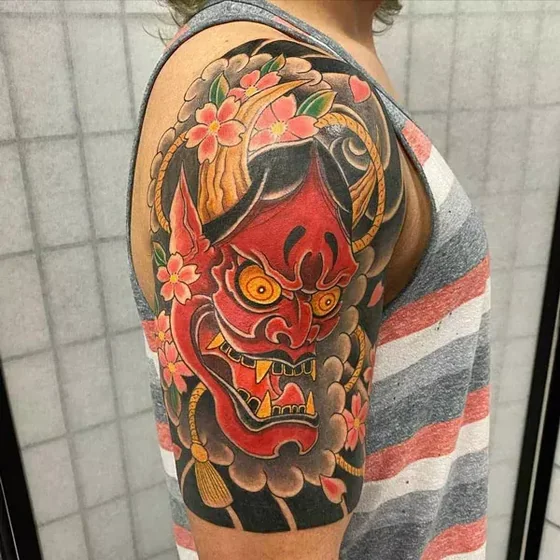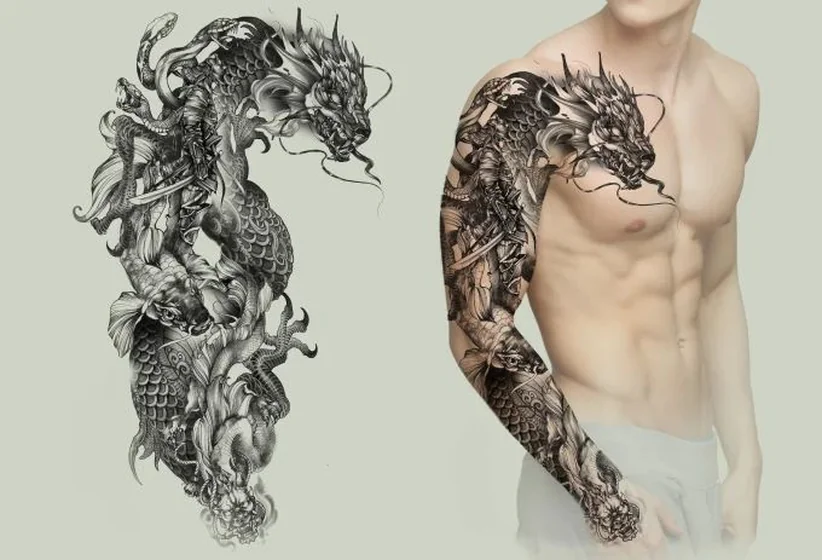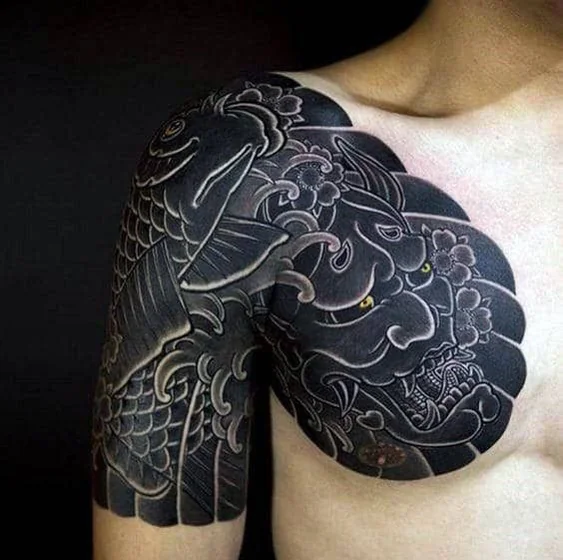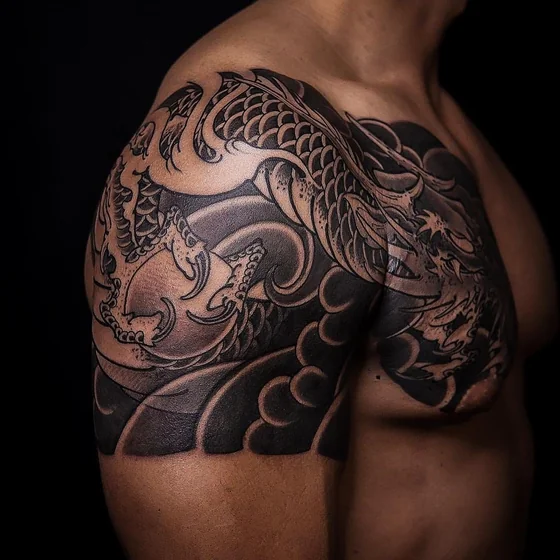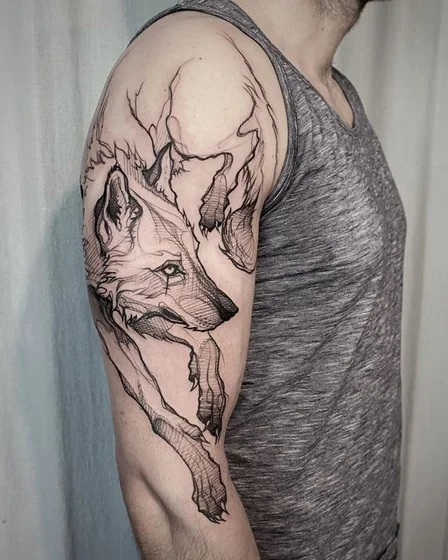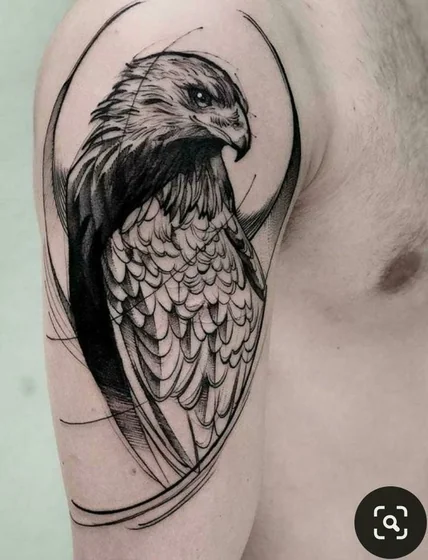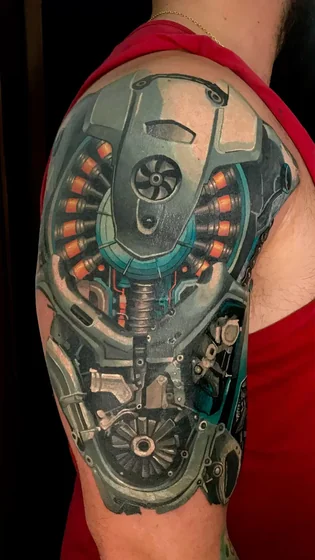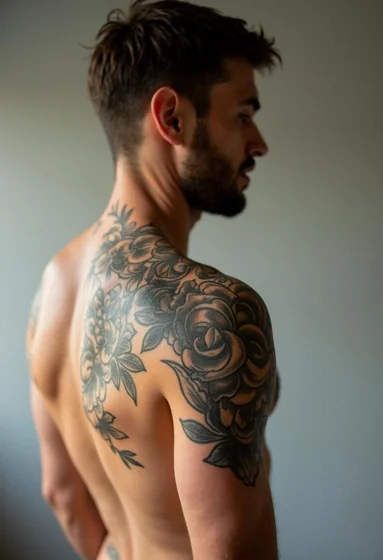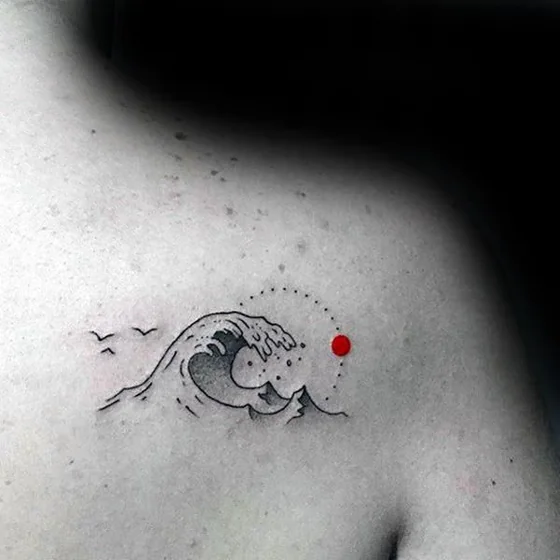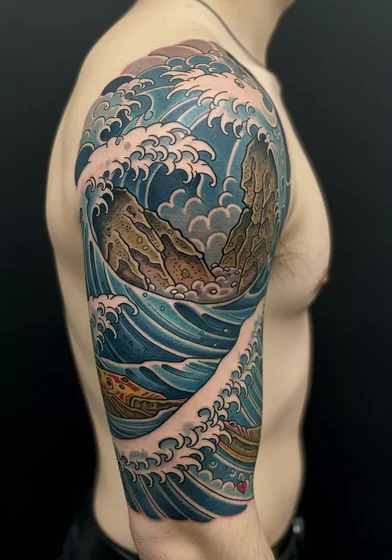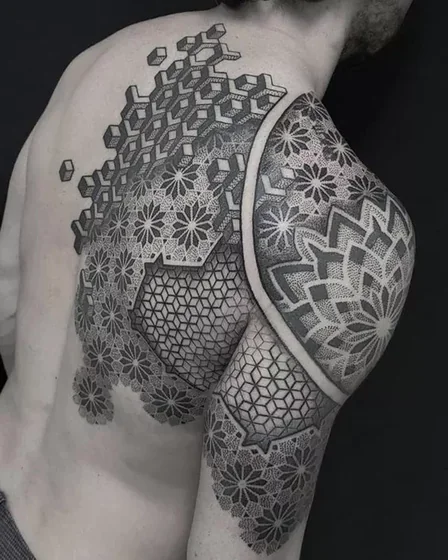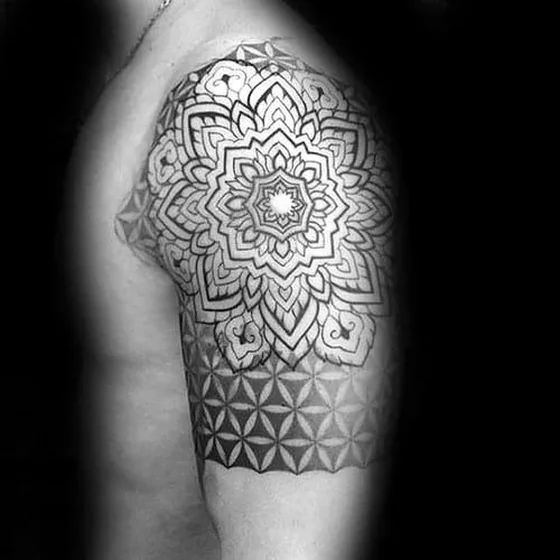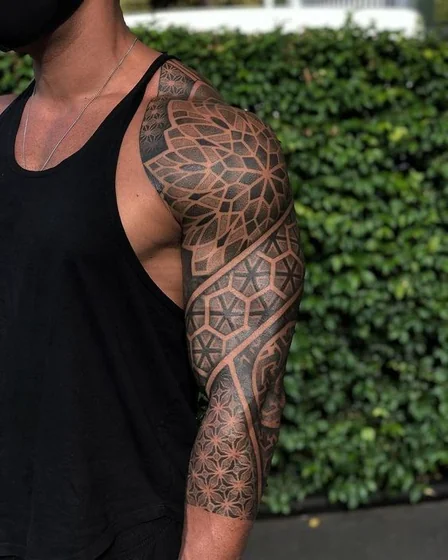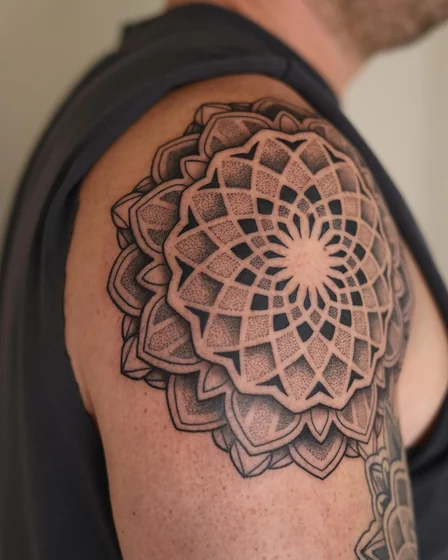Filters
Tattoo Ideas
3D Virtual Try-On
Stop guessing. See exactly how your tattoo will look on your body. Upload your design, and visualize it instantly.
- Realistic 3D skin simulation
- Multiple body positions
- Upload your own design
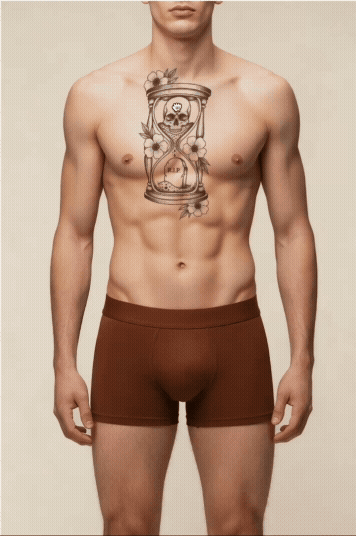
Shoulder tattoos for men represent the ideal balance between professional concealment and physical assertion. By utilizing the deltoid's natural definition, these designs transform muscle tone into living sculpture while remaining easily hideable under business attire. This dual-mode functionality makes the shoulder the premier choice for ambitious individuals who require visual authority in casual settings without compromising career advancement in corporate environments.
Architectural Design Strategies
Male tattoo designs shoulder concepts generally fall into three structural categories, each solving specific aesthetic goals:
- The Armor Cap (Pauldron Style): This method treats the shoulder as a protective plate. Using bold tribal patterns, Celtic knotwork, or biomechanical plating, it creates the illusion of warrior gear. It is ideal for athletic builds, as the design expands and contracts with muscle movement.
- Descending Power Flow: Starting with a focal point (like a lion or skull) on the cap, aggressive elements extend down toward the elbow. This vertical emphasis creates visual momentum, making the arm appear longer and more powerful—a perfect strategy for stockier builds.
- Integrated Torso Expansion: The shoulder serves as an anchor point, blending chest pieces seamlessly into arm sleeves. While this requires the highest investment, it delivers museum-quality coverage that maximizes physique enhancement.
Body Type Optimization
Your skeletal frame dictates which composition will look most powerful:
- Broad Shoulders: Can support complex, large-scale realism or intricate geometric patterns without looking cluttered. Feel free to extend onto the chest or back.
- Average/Narrow Width: Benefit from "Vertical Emphasis." Avoid overcrowding; use bold tribal lines or negative space to create optical illusions that widen the frame.
- Muscular Definition: If you have developed delts, use designs with negative space to frame the muscle. If you are still building mass, opt for solid, dense coverage to suggest size and power.
Timeless Masculine Motifs
- Modern Tribal: Evolved beyond 90s clichés, custom geometric flows now follow specific anatomy rather than generic stencils.
- Predator Symbolism: Lions (leadership), Wolves (loyalty), and Bears (strength) placed on the shoulder cap facing forward maximize confrontational impact.
- Biomechanical/Cyberpunk: Perfect for technical minds, these designs make the arm look like it houses advanced technology. Note: Requires a specialist artist.
Investment & Pain Guide
- Pain Scale: 4/10 (General Deltoid), rising to 7/10 near the collarbone and armpit.
- Healing Timeline: 2-3 weeks for surface healing; 4-6 weeks for deep structural healing.
- Cost Estimates (2025):
- Shoulder Cap: $600 – $1,200 (Single Session)
- Extended Half-Sleeve: $800 – $2,000+
- Chest Integration: $2,000 – $5,000+ (Multi-session)
Critical Consultation Checklist
Before booking, consider these logistical factors:
- Gym Routine: Can you take 2 weeks off from overhead pressing? Training too soon causes blowouts.
- Handedness: Dominant side placement gets more visibility during hand gestures; non-dominant placement keeps the "handshake side" professional.
- Future Expansion: Ask your artist to leave "open edges" if you plan to extend this into a full sleeve later.
For a contrasting aesthetic that prioritizes flow over armor, compare these with designs for women to see how composition changes based on anatomy.
Explore More Styles
- Arm Tattoos for men: Extend your shoulder piece downward to create a cohesive bicep and tricep composition.
- Full Sleeve Tattoos for men: Commit to the ultimate masculine statement by connecting your shoulder ink to a wrist-length masterpiece.
- Chest Tattoos for men: Expand your armor inward to cover the pectoral muscles for a wider, more imposing front profile.
